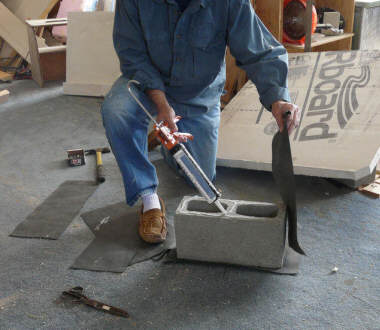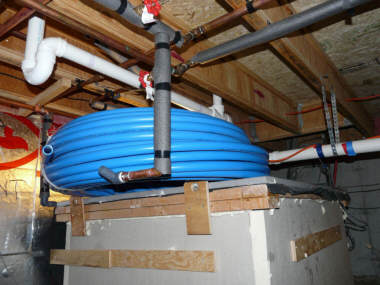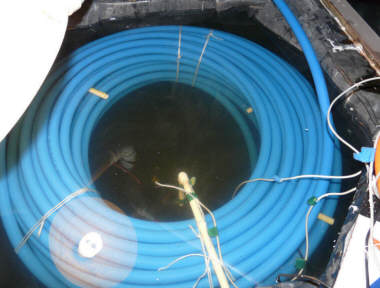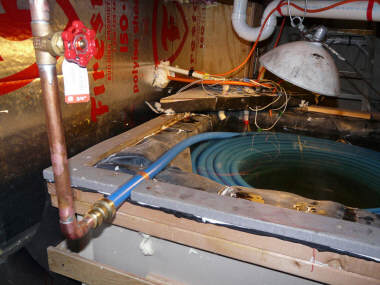Installing the PEX Pipe CoilI kept the 300 ft PEX coil in
its original coil shape. I tied it several places with
polypropylene twine, and then cut the bands that held it tightly in its
coiled shape. This allowed it to expand a bit, and
made some space between the coils for water to circulate and transfer
heat.
I installed a few CPVC pipe spacers between coils to make more space
for the tank water to circulate around the coils. Unfortunately,
these little pipes tend to fall out over time.
After thinking about
this, I think that the best way would have been to make some T shaped
pieces from CPVC such that one leg of the T could be pushed between the
coils from the top -- the other two legs of the T would rest on the top
of the pipe coil and keep it from falling out. This would make for
vertical flow channels through the PEX coil, which is probably better
for heat exchange than the horizontal channels.
Some people who have
built $1K solar water heating systems have recoiled the PEX to make a
more effective heat exchanger -- for example
Ken's tank has a very nicely done example... I'm sure that
this does make for improved heat transfer, but bear in mind that
recoiling PEX is a real pain.
Note that the plumbing connections to the PEX coil are made outside
the tank -- there are no heat exchanger connections immersed in the heat
storage water.
The 300 ft of PEX is probably overkill for the heat exchanger for
normal residential use. You could probably use 200 ft and get good
results. I used the full 300 ft because that's the way is came,
and I had no other use for the extra 100 ft. |







